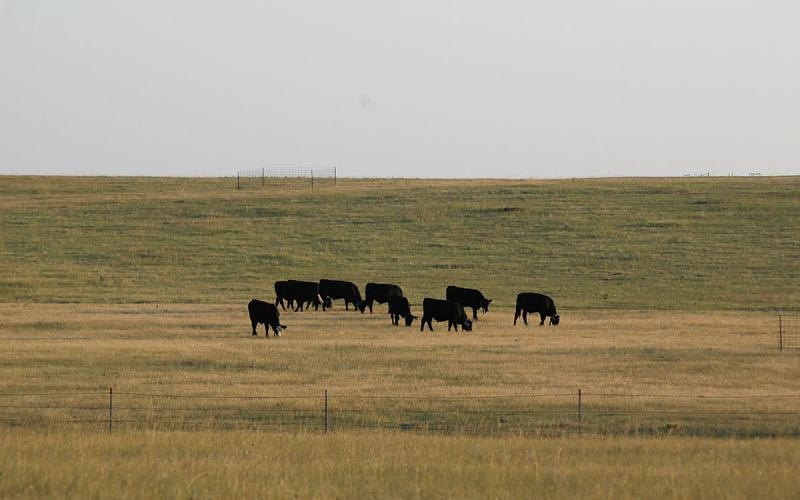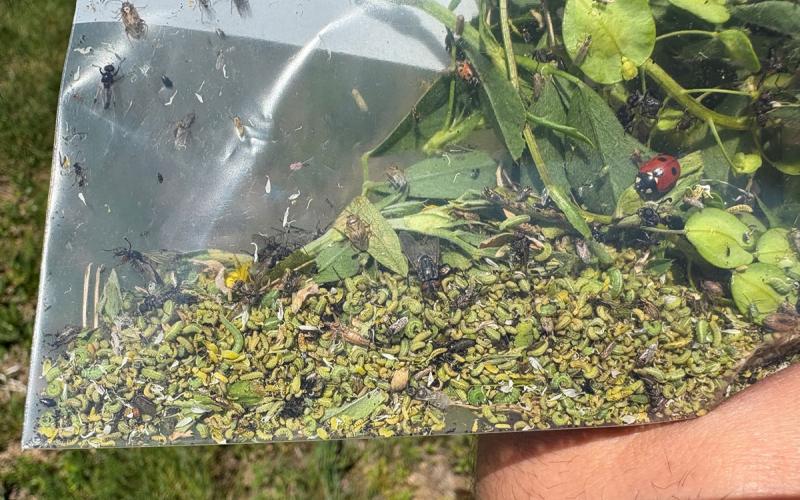
Weather conditions in South Dakota and the Great Plains occasionally cause problems with plant diseases and crop quality. In the case of wheat, vomitoxin or ergot can result in crops that are unmarketable through traditional channels. However, these grains can be successfully salvaged as cattle feed if we follow management guidelines.
Mycotoxin Considerations
Vomitoxin is a mycotoxin that may be produced in wheat grain infected by Fusarium head blight or scab. The risk level of the grain cannot be determined by visual examination, as not all wheat with scab contains vomitoxin, and those levels do not necessarily correlate with the physical symptoms in the grain. The only certain measure is a lab analysis. The FDA guidelines on vomitoxin levels in feedstuffs fed to beef cattle older than 4 months are 10 parts per million (abbreviated as ppm), provided that the feedstuff does not exceed 50% of the diet.
Feeding damaged wheat to livestock is one way to salvage value from the crop. Wheat can work well in cattle diets with some limitations. Wheat is highly fermentable in the rumen and can result in bloat, acidosis, and digestive upsets if too much is included in the diet or if bunks are not managed carefully. For those reasons, wheat should be limited to one-third of the grain content if fed with high-moisture corn, or up to two-thirds of the grain when fed with dry corn (all proportions on a dry matter basis). This would apply to both grower and finishing cattle diets. Final incorporation of wheat would need to consider both the limitations for wheat in general and the specific guidelines for vomitoxin.
Wheat and corn differ in their rate of starch fermentation in the rumen. The combination results in an essentially a free performance boost, otherwise called a positive associative effect. Feeding wheat with corn improves performance about 2 to 4% compared to expectations.
Be extremely cautious feeding wheat screenings. The cleaning process removes a large percentage of the smaller, scab-infested kernels, resulting in increased concentration of mycotoxins in the screenings. The safest option is to not feed wheat screenings from scab-infested wheat at any level. At a minimum, screenings need to be lab tested prior to feeding.
These mycotoxins can also be found in the straw. The safest option for straw from fields known to contain vomitoxin would be as bedding for feedlot or mature cattle. If the straw is to be fed, it should be tested prior to feeding and diluted according to the 10 ppm and 50% of the diet limitations.
Ergot-Infected Wheat
Ergot in wheat also occurs on occasion. Wheat containing more than 0.05% ergot may be rejected in the commercial grain trade. Ergot concentrations greater than 0.1% have affected dry matter intake and cattle performance. More information on ergot and potential problems with livestock can be found in the article, Ergot: A potential poisoning problem for livestock.
Additional Considerations
Delayed harvest can also lead to issues with sprouted wheat. This grain will be significantly discounted in commercial channels. However, there have been no significant performance losses observed in cattle feeding trials, indicating that marketing sprouted grain through cattle is a viable option. These grains should still be tested for vomitoxin and fed at no more than 40% of the diet dry matter like any other wheat.
Other tips for feeding wheat (normal or damaged) include:
- Adapt cattle to wheat by starting at low levels (10 to 15% of the diet) and increase that amount in steps over a number of days.
- Wheat must be processed (coarsely cracked) for improved digestibility, but not finely ground. Feeding whole wheat increases the risk of hindgut acidosis and bloat.
- Including an ionophore will help reduce over consumption and acidosis.
- Do not feed wheat in a self-feeder.


